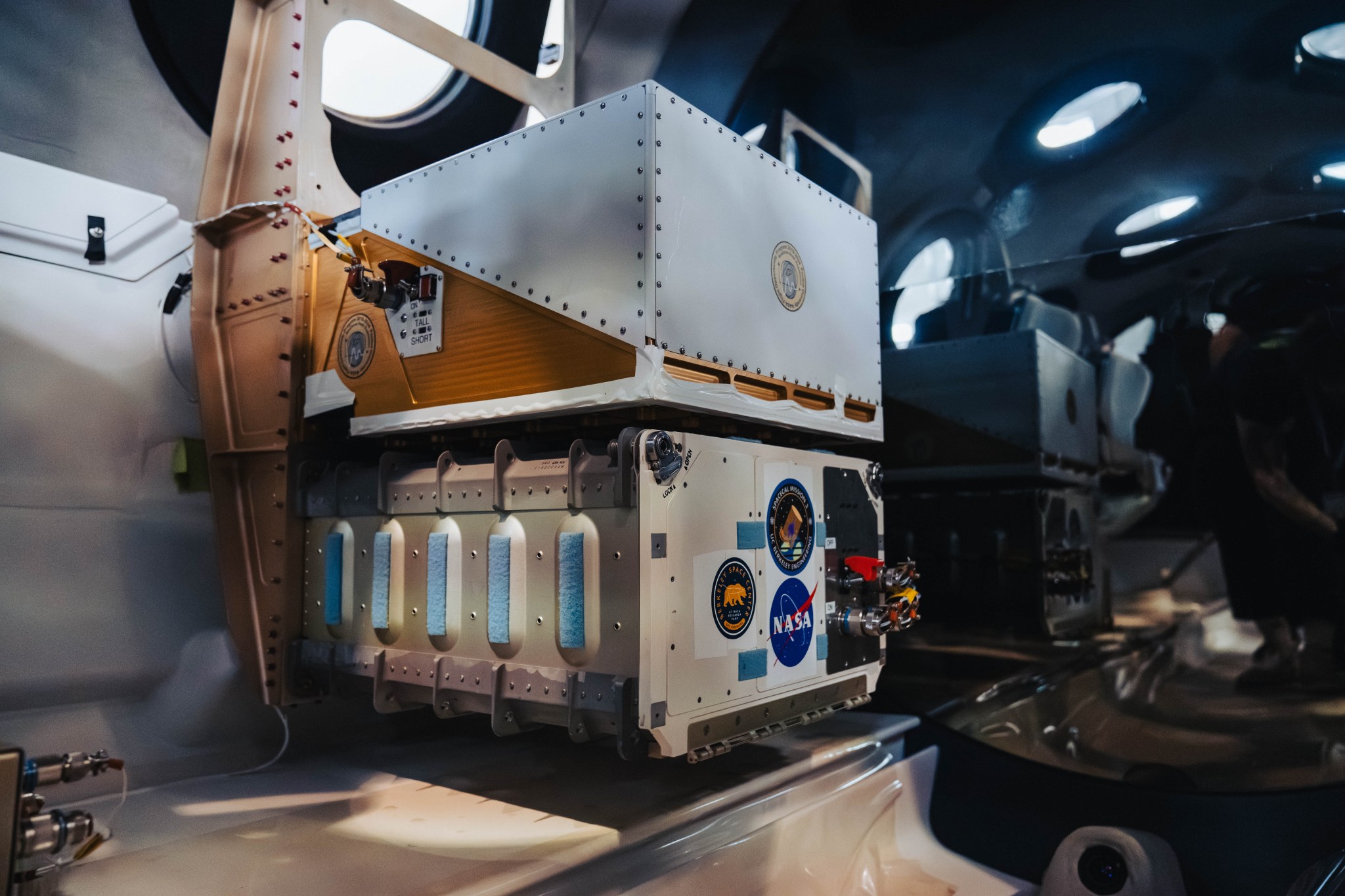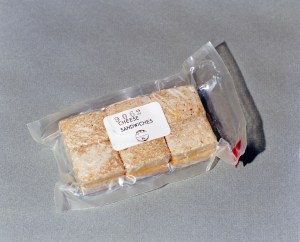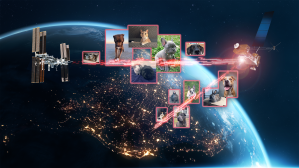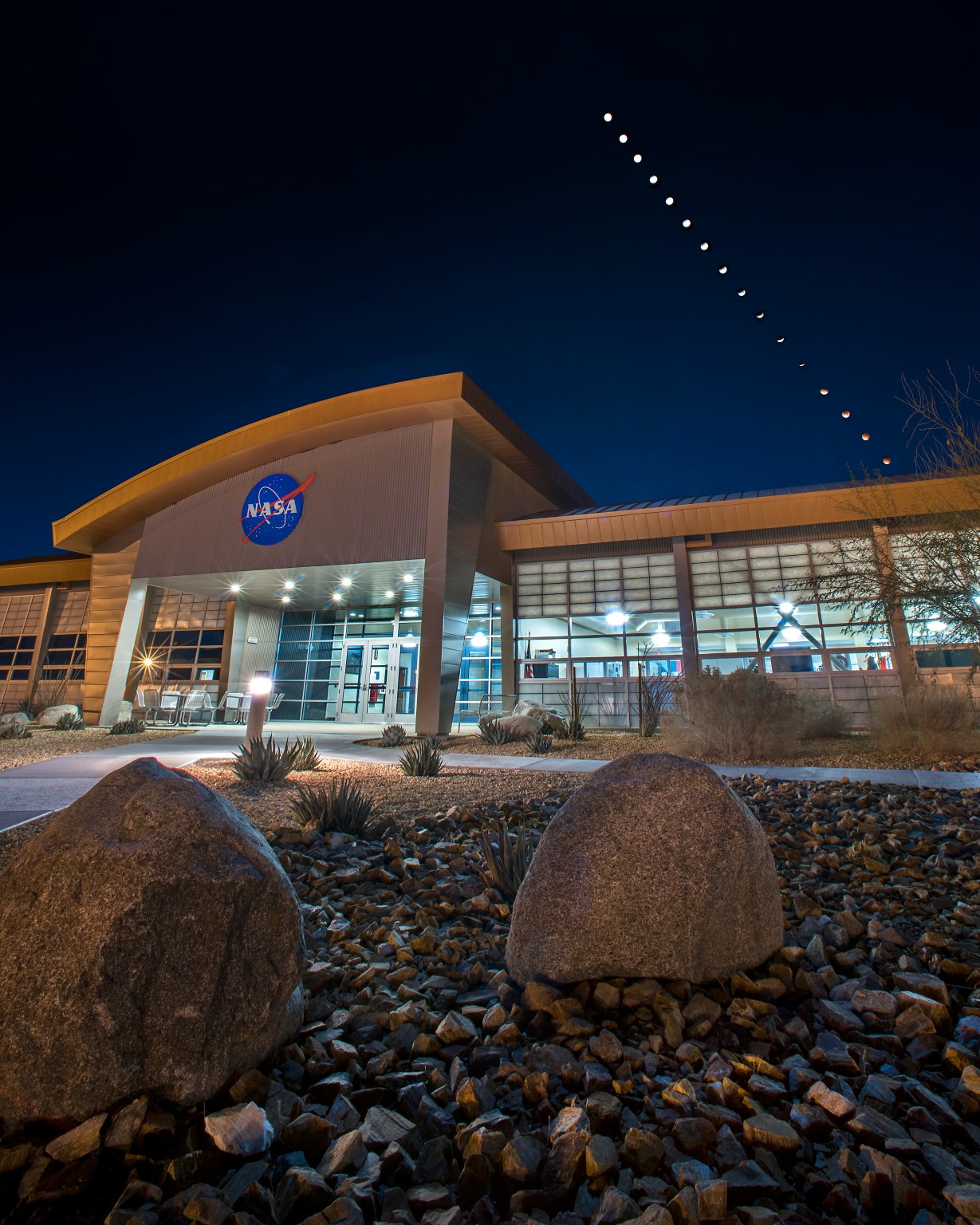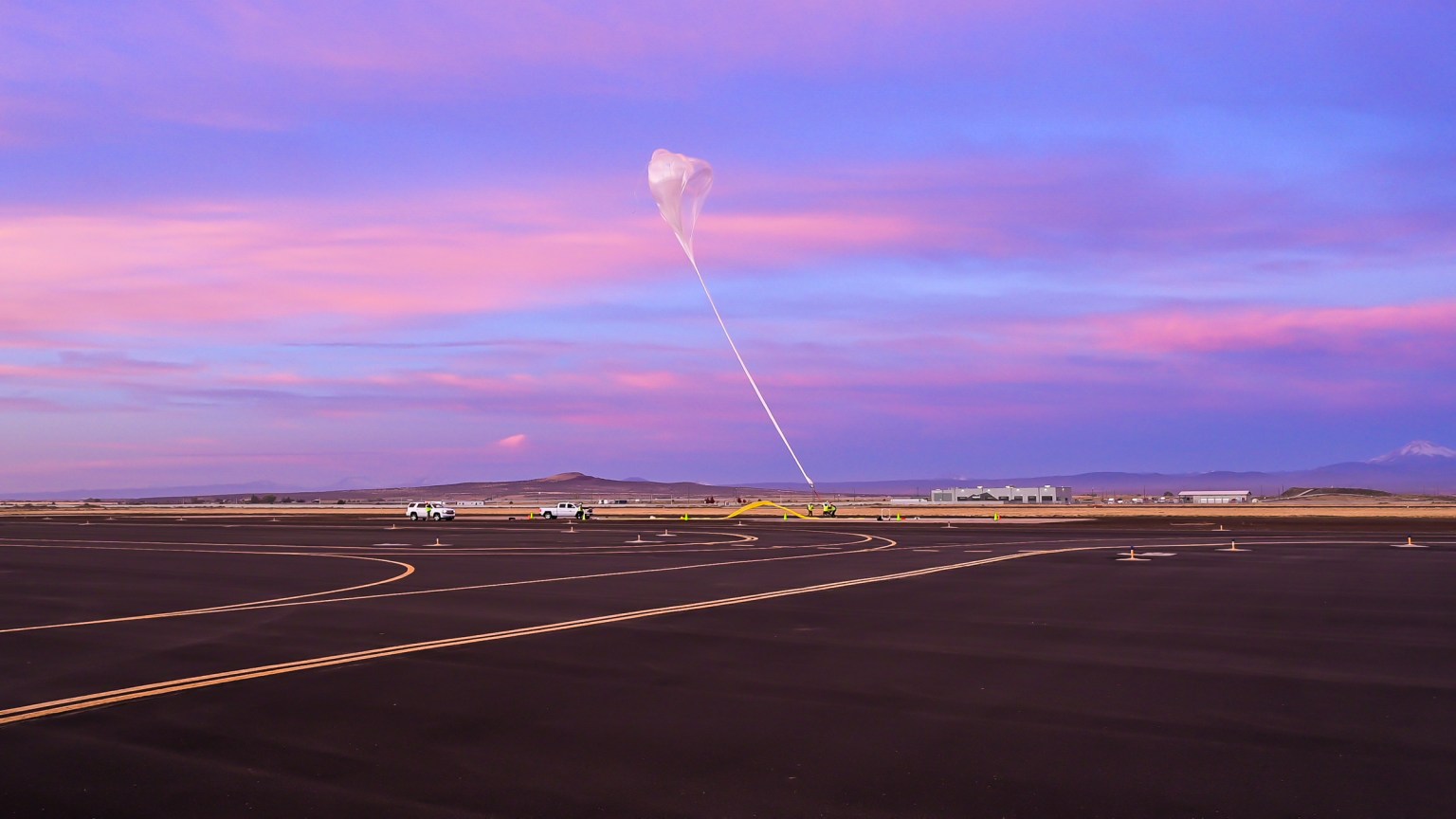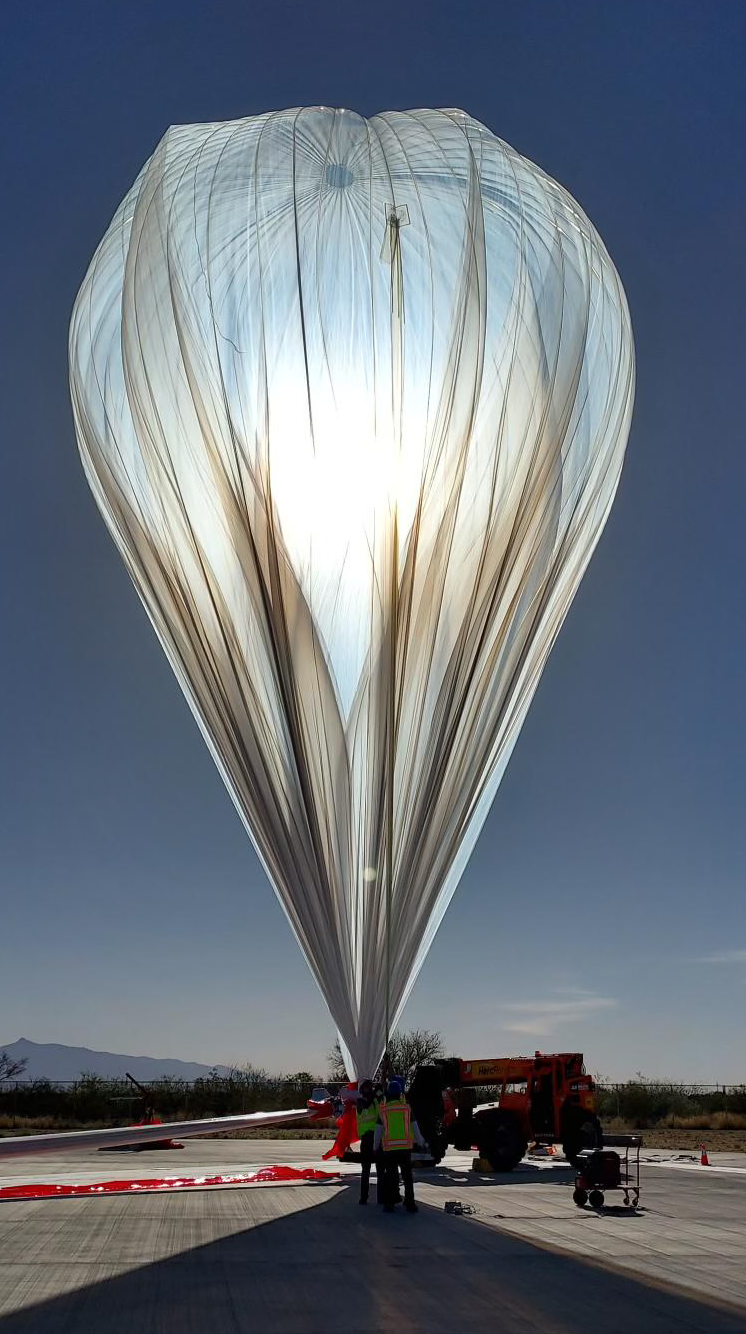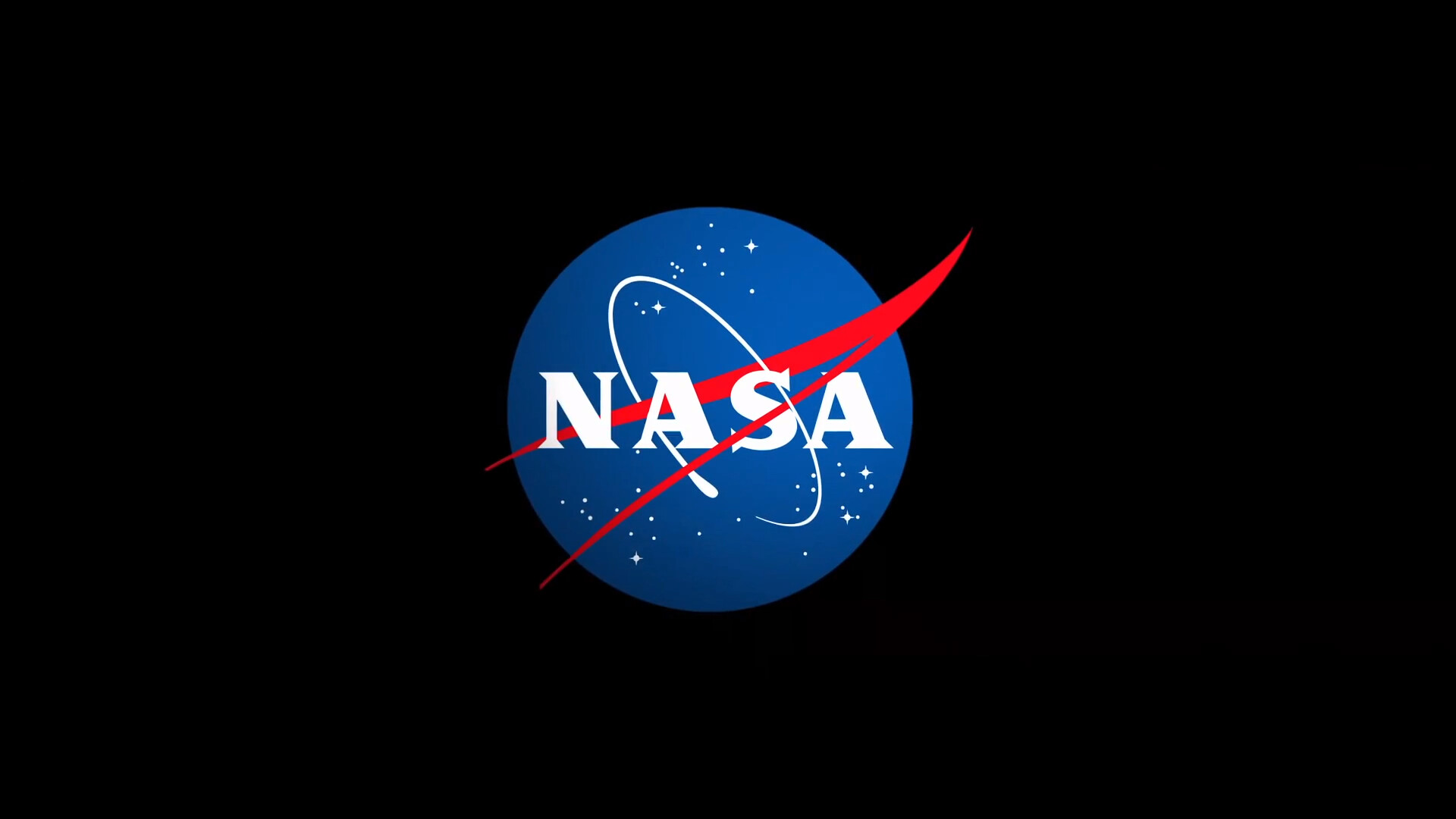NASA Program Sends University Payloads to Space
NASA’s Flight Opportunities program sent two university payloads on suborbital flight tests onboard Virgin Galactic’s VSS Unity on June 8 when it launched from Spaceport America in Las Cruces, New Mexico. The payloads carrying scientific research from University of California, Berkeley and Purdue University in West Lafayette, Indiana, align with critical technology needs that NASA has […]
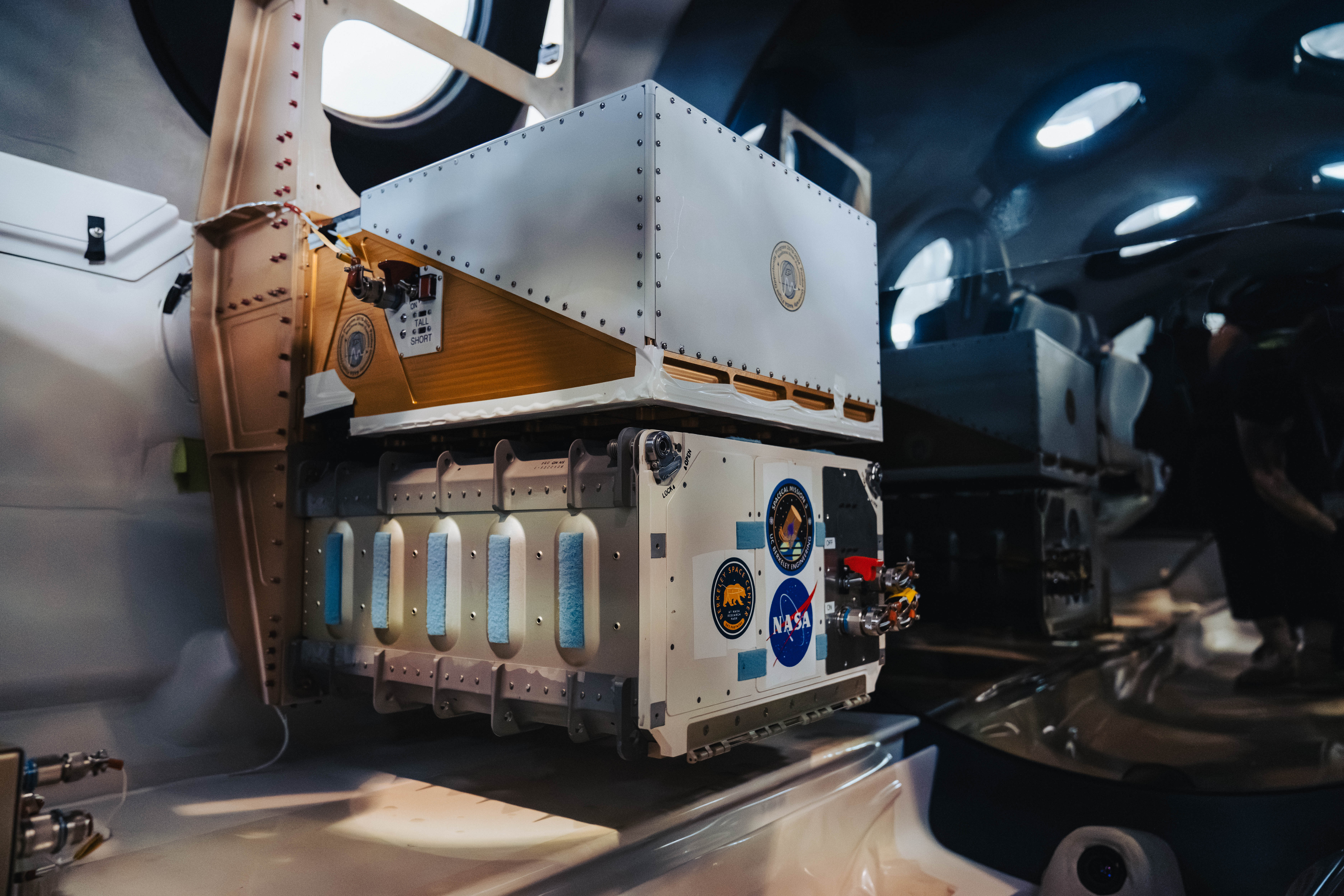
2 min read
Preparations for Next Moonwalk Simulations Underway (and Underwater)
NASA’s Flight Opportunities program sent two university payloads on suborbital flight tests onboard Virgin Galactic’s VSS Unity on June 8 when it launched from Spaceport America in Las Cruces, New Mexico.
The payloads carrying scientific research from University of California, Berkeley and Purdue University in West Lafayette, Indiana, align with critical technology needs that NASA has identified in pursuit of the agency’s space commerce and exploration goals. The payload from UC Berkeley studied a new type of 3D printing and the payload from Purdue studied how sloshing of liquid propellant affects spacecraft direction.
The need to print building materials in space without having to transport them will be critical in the coming years as humans live and work in space for longer durations. Optimizing spacecraft and satellite design will help us increase the rate of scientific discoveries both here on our home planet and on the Moon, Mars, and beyond.
“Our program enables researchers to move from the lab to flight test rapidly, and in many cases, multiple flight tests across different commercial vehicles. This allows them the invaluable opportunity to learn from initial tests, implement improvements, and then fly again – or as we like to say, ‘fly, fix, fly,’” said Danielle McCulloch, program manager for Flight Opportunities at NASA’s Armstrong Flight Research Center in Edwards, California.
Photo credit: Virgin Galactic
Share
Related Terms
What's Your Reaction?



















.jpg?#)























